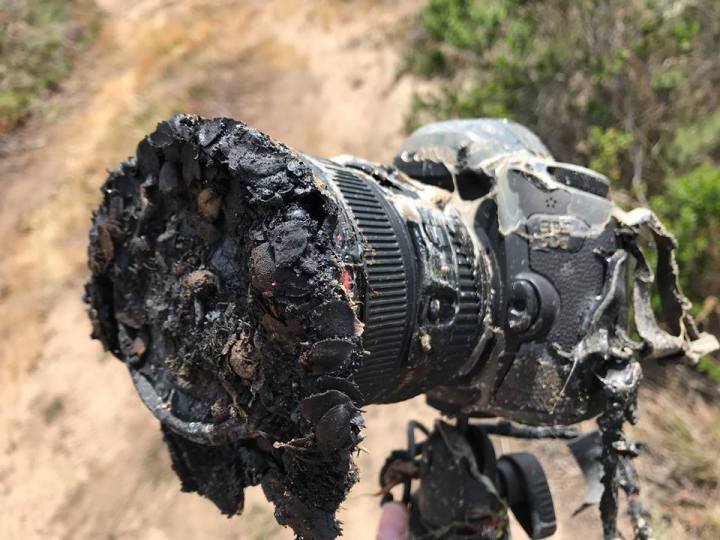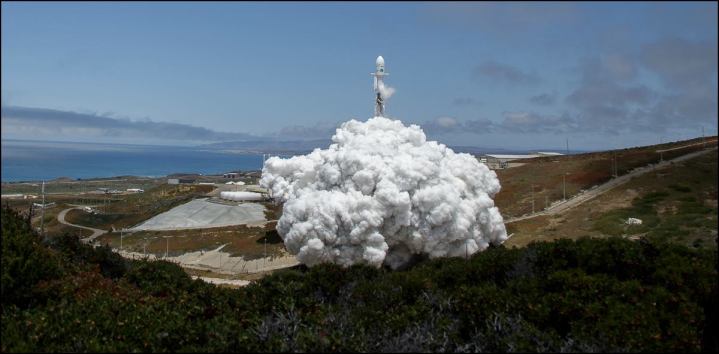
This is what happened to a DSLR camera on Tuesday, May 22 as it was shooting SpaceX’s latest Falcon 9 rocket launch.
The camera belongs to NASA photographer Bill Ingalls, who was happy to share an image of his wrecked equipment on Facebook.
“Well, one remote cam outside the pad perimeter was found to be a bit toast(y),” Ingalls wrote in a post accompanying the picture.
But the story isn’t exactly as it seems.
If you’re thinking the heat from the rocket launch melted the camera, think again. If you look at the image below, which the camera snapped before it met its maker, you’ll notice it’s some considerable distance away from the launch pad.

Ingall’s shooter was actually loused up by a brush fire caused by the launch. As he noted in his post, he had other cameras nearer to the rocket and they escaped both the heat of the launch and the brush fire.
“I had many other cameras much closer to the pad than this and all are safe,” the photographer wrote. “This was result of a small brush fire, which is not unheard of from launches.” It was later put out by firefighters, but by that time Ingall’s camera had been utterly disfigured.
The device, in case you’re unable to identify the mangled mess, is a $3,500 Canon 5DS DSLR, together with a professional, and rather expensive, L-Series lens.
As we already know from Ingall’s posted images, the memory card retained the shots, with the camera doing its job until the heat proved too much. It was just unlucky to end up in the middle of a brush fire.
Of course, Ingalls isn’t the first photographer to have his kit wrecked during a shoot, and he certainly won’t be the last.
In September last year, a number of photographers ruined their camera equipment while trying to capture the much-anticipated solar eclipse. Heat from focusing on the natural phenomenon damaged mirrors and melted aperture mechanisms, resulting in hefty repair bills.
And then there was this fella who had parts of his camera setup torn apart by leaf-cutter ants during a visit to the Amazon rainforest.
Of course, pro shooters also run the risk of damaging themselves, as this collection of nasty-looking incidents caught on video shows.


